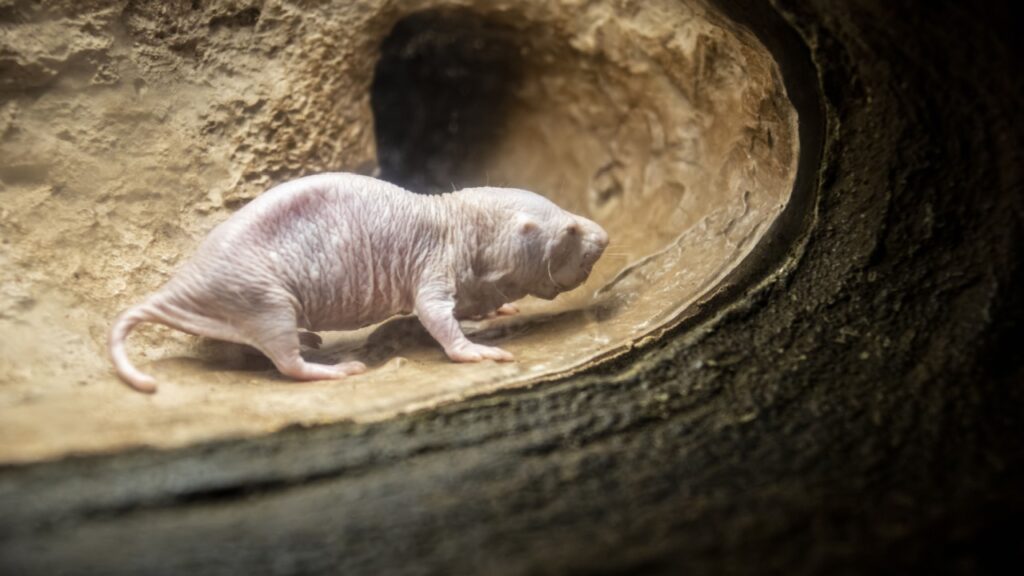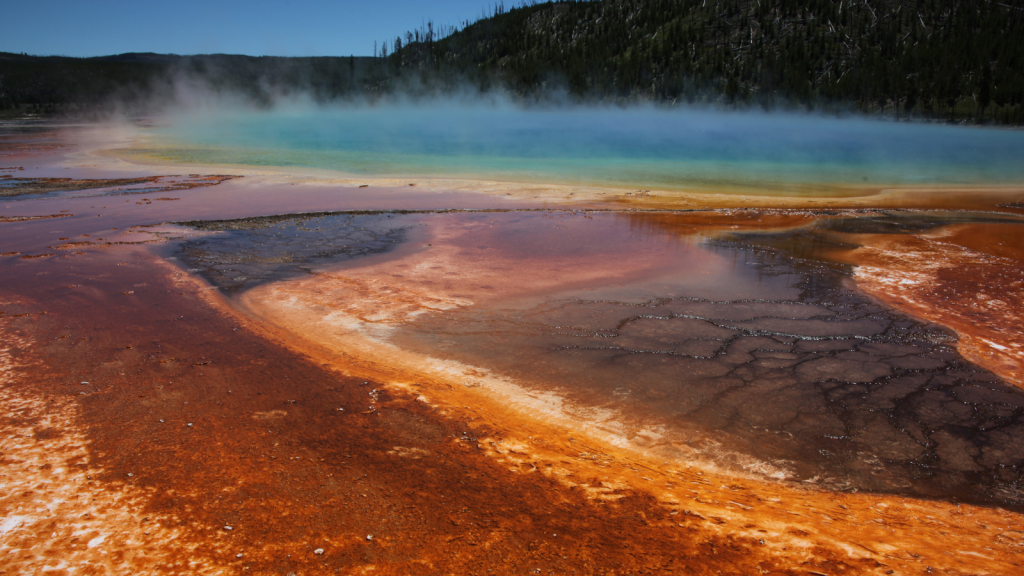Nature never ceases to amaze us with its ability to adapt and thrive in the most challenging conditions. Across our planet, there are creatures that have evolved to live in places we’d consider uninhabitable. These resilient beings have developed unique ways to cope with extreme toxicity, whether it’s in water, soil, or air. From microscopic organisms to larger animals, these species show us just how tough and clever life can be. Their stories of survival are not only fascinating but also give us hope for the future of our ever-changing world. Let’s explore some of these remarkable creatures and the toxic environments they call home.
Tardigrades

Tardigrades, also known as water bears, are tiny creatures that can survive almost anywhere. These microscopic animals can withstand extreme temperatures, radiation, and even the vacuum of space. They can enter a state of cryptobiosis, where they essentially shut down their metabolism, allowing them to survive in toxic environments for years. Tardigrades have been found in some of the most inhospitable places on Earth, from the depths of the ocean to the peaks of the Himalayas.
Pompeii Worms

Living near deep-sea hydrothermal vents, Pompeii worms endure scorching temperatures and high levels of toxic chemicals. Their bodies are covered in bacteria that help protect them from the harsh conditions. These worms can survive in water temperatures up to 80°C, making them one of the most heat-tolerant animals on Earth. Scientists believe studying Pompeii worms could lead to breakthroughs in heat-resistant materials and biotechnology.
Sulfur-Eating Bacteria

In the depths of the ocean, sulfur-eating bacteria thrive in toxic environments rich in hydrogen sulfide. These microorganisms have evolved to use sulfur compounds as an energy source, converting them into less harmful substances. Their ability to survive in these conditions makes them crucial for maintaining the balance of marine ecosystems. Some species of sulfur-eating bacteria are being studied for their potential in bioremediation of polluted sites.
Bearded Vultures

Bearded vultures have adapted to feed on the bones of dead animals, which often contain high levels of lead and other toxins. Their digestive system is incredibly acidic, allowing them to break down and neutralize these harmful substances. This unique diet helps them avoid competition with other scavengers and survive in harsh mountain environments. Bearded vultures play a vital role in their ecosystems by cleaning up carcasses and recycling nutrients.
Naked Mole Rats

These hairless, underground-dwelling rodents have a remarkable ability to survive in low-oxygen environments. They can live in burrows with high levels of carbon dioxide, which would be toxic to most mammals. Naked mole rats have also shown resistance to cancer and other age-related diseases, making them a subject of intense scientific interest. Their unique physiology has inspired research into pain relief and cancer prevention in humans.
Mummichogs

These small fish can survive in heavily polluted waters along the East Coast of North America. Mummichogs have evolved to tolerate high levels of industrial chemicals and heavy metals in their environment. Their ability to adapt quickly to changing conditions makes them valuable indicators of water quality. Researchers use mummichogs to study the effects of pollution on aquatic life and to monitor the health of coastal ecosystems.
Hooded Pitcher Plants

These carnivorous plants have adapted to grow in nutrient-poor, acidic soils by trapping and digesting insects. Hooded pitcher plants can tolerate high levels of heavy metals in their environment, accumulating these toxins in their tissues without harm. This ability makes them useful for cleaning up contaminated sites. Some scientists are exploring the potential of using pitcher plants for phytoremediation, a process that uses plants to remove pollutants from soil and water.
Extremophile Archaea

These ancient microorganisms thrive in some of the most extreme environments on Earth, including highly acidic hot springs and salt lakes. Some species of extremophile archaea can survive in conditions that would instantly kill most other life forms. Their unique adaptations offer insights into the potential for life on other planets. Enzymes from extremophile archaea are used in various industrial processes, including the production of biofuels and pharmaceuticals.
Radiotrophic Fungi

Discovered growing inside the Chernobyl nuclear reactor, these fungi can use radiation as an energy source. They contain high levels of melanin, which helps protect them from the harmful effects of radiation. These remarkable organisms could potentially be used to clean up radioactive waste sites. Scientists are also investigating whether radiotrophic fungi could be used to protect astronauts from cosmic radiation during long-space missions.
Tubeworms

Living near deep-sea hydrothermal vents, tubeworms have no mouth or digestive system. Instead, they rely on symbiotic bacteria living inside them to convert toxic chemicals from the vents into food. This unique relationship allows them to thrive in an environment that would be lethal to most other creatures. Tubeworms can grow up to 2 metres long and live for over 250 years, making them some of the longest-lived animals on Earth.
Deinococcus Radiodurans

Known as the world’s toughest bacterium, Deinococcus radiodurans can withstand extreme levels of radiation, dehydration, and other toxic conditions. It can repair its own DNA when damaged, making it incredibly resilient. This bacterium has potential applications in cleaning up nuclear waste sites. Researchers are also studying D. radiodurans for insights into developing more effective radiation protection for humans.
Loricifera

These tiny marine animals were discovered living in the oxygen-free environment of the Mediterranean seafloor. They are the first known animals that can live and reproduce entirely without oxygen, using a different process to generate energy. This discovery has changed our understanding of what environments can support animal life. Loricifera’s unique metabolism could provide clues about how life might exist on other planets with little or no oxygen.
Nematodes

These small worms are found in nearly every ecosystem on Earth, including highly polluted areas. Some species of nematodes can tolerate extreme levels of toxic metals and other pollutants. Their ability to survive in contaminated soils makes them useful indicators of environmental health. Certain nematode species are being used in bioremediation efforts to clean up oil spills and other forms of pollution.
Bedbugs

While not welcome in our homes, bedbugs have shown remarkable resilience to pesticides and other toxic chemicals. They have evolved various mechanisms to resist common insecticides, making them increasingly difficult to control. This adaptation highlights the ongoing battle between human intervention and nature’s ability to adapt. Studying bedbug resistance is helping scientists develop more effective and sustainable pest control methods.
Plastisphere Microbes

Recently discovered communities of microorganisms are thriving on plastic debris in the ocean. These “plastisphere” microbes have adapted to break down and live on materials that we consider pollutants. Their existence shows how life can evolve to make use of even human-made toxic environments. Researchers are exploring whether these microbes could be harnessed to help solve the global plastic pollution crisis.
10 Desert Predators With Unique Hunting Adaptations

The harsh desert environment has shaped some of the most remarkable hunters on Earth. These animals have evolved incredible ways to survive and thrive in a world of extreme heat and scarcity. From silent stalkers to venomous ambush experts, desert predators are masters of adaptation. Their hunting techniques are as varied as they are fascinating, each perfectly suited to the challenges of their arid homes. Join us as we explore ten of these amazing creatures and the special tricks they use to catch their prey.
Read More: 10 Desert Predators With Unique Hunting Adaptations
15 Facts About the Honey Badger, the Fiercest Animal in Africa

The honey badger, a small but mighty creature, roams the African wilderness with a fearless attitude that’s earned it quite a reputation. These tenacious animals have captured the imagination of wildlife enthusiasts and casual observers alike. Despite their name, honey badgers aren’t closely related to European badgers and are more akin to weasels and otters. Their tough-as-nails approach to life and remarkable abilities have made them the stuff of legend. Let’s explore some fascinating facts about these extraordinary creatures that prove why they’re considered Africa’s fiercest animals.
Read More: 15 Facts About the Honey Badger, the Fiercest Animal in Africa
Meet the Wolf Spider | One of Britain’s Biggest Spiders

Wolf spiders are a remarkable group of arachnids found across the UK and around the world. These agile hunters get their name from their wolf-like hunting style, actively chasing down prey rather than spinning webs. With their large eyes and hairy bodies, wolf spiders might look intimidating, but they’re actually quite beneficial to gardens and homes. These spiders help control pest populations and are generally harmless to humans. From their unique parenting techniques to their impressive hunting skills, wolf spiders are full of surprises.
Read More: Meet the Wolf Spider | One of Britain’s Biggest Spiders
Becky is a fervent wildlife enthusiast and pet care expert with a diploma in canine nutrition. Her love for animals stretches beyond the domestic, embracing the wild tapestry of global fauna. With over a decade of experience in animal welfare, Becky lends her expertise to OutlandishOwl through insightful articles, captivating wildlife information, and invaluable guidance on pet nutrition. Her work embodies a deep commitment to understanding the intricate lives of animals and a passion for educating others on sustaining natural habitats. Becky's hands-on conservation efforts and her knack for translating complex dietary science into practical pet feeding tips make her an indispensable voice for creatures great and small.




